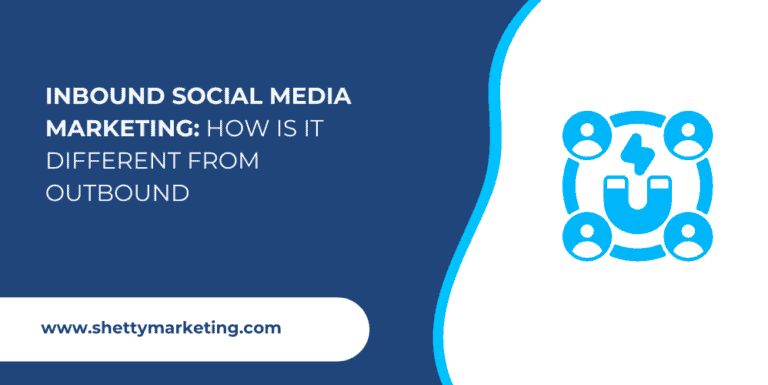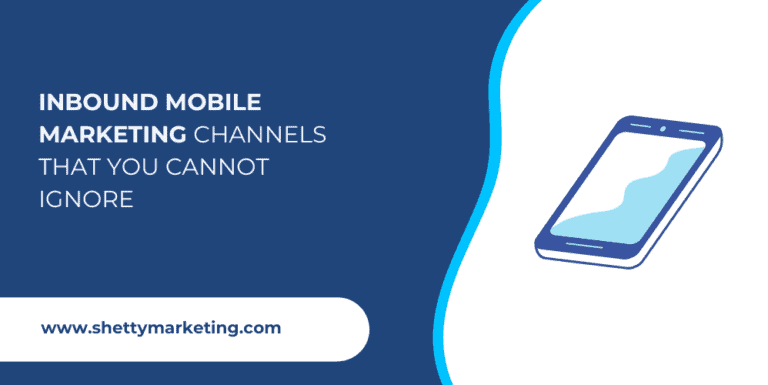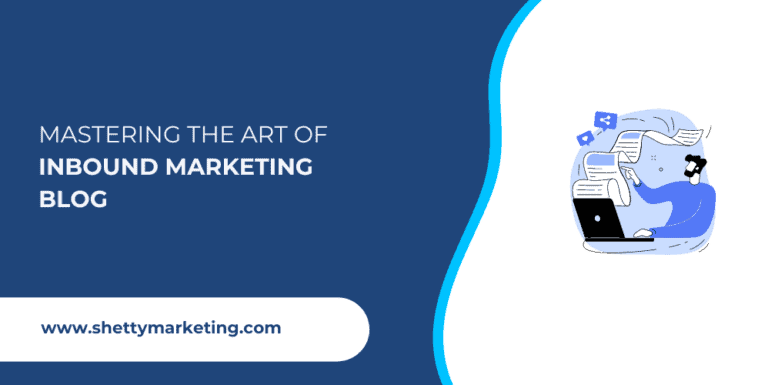Many businesses are missing out on a golden opportunity – they’re focusing primarily on social selling, pouring most of their budget into social media ads.
What they’re overlooking is the power of inbound marketing on social media.
Did you know that inbound tactics generate 54% more leads than traditional outbound marketing practices?
That’s a whole bunch of potential customers you could be reaching! In this blog, I’m going to share some tips and tricks on how to successfully use inbound marketing in your social media strategy.
Pinterest: Best Inbound Social Media Engagement Channel
Unlike its counterparts like Instagram and Facebook, Pinterest isn’t about aimlessly scrolling through content. Rather, it’s a visual search engine where users are actively planning and making purchase decisions. This makes it an ideal platform for inbound marketing for your business.
One of the unique aspects of Pinterest is its curated content. The platform encourages users to interact with pins, helping it learn more about their preferences. This way, Pinterest can provide personalized suggestions based on users’ interaction history.
Pinterest SEO
Fast forward to 2024, Pinterest is no longer just about pinning your favorite images. It’s about creating targeted, high-quality, and easily discoverable content. And how do you make your content easily discoverable, you ask? Through Pinterest SEO!
By using relevant keywords, you can make your content easily searchable by search engines.
Influencer Marketing on Pinterest
Creating searchable content isn’t the only way to maximize engagement. Businesses must create authentic content that resonates with users.
A great way to do this is by collaborating with influencers, particularly nano or micro-influencers. These influencers have a knack for creating content that connects with their audiences, which often leads to higher engagement rates.
You can use tools such as Pingroupie to help find the right influencers. All you have to do is input your keywords and it will do the work for you. This way, you can easily find influencers who are relevant to your brand.
Public boards on Pinterest can also be a great place to start your influencer hunt. These boards are created by Pinterest users and often have a considerable following. If these users are interested in your brand, they could be potential influencers for your marketing campaign.
Lastly, the ‘site’ operator can be a very useful tool. Simply combine the ‘site’ operator with your keyword to search for Pinterest pages that match your criteria.
For instance, if you’re in the fashion industry and looking for influencers, you could use:
site:pinterest.com [keyword].
Here, [keyword] could be ‘fashion bloggers,’ ‘fashion influencers,’ or ‘fashion clothing.’ This will help you find Pinterest pages that include both ‘fashion’ and either ‘bloggers’ or ‘influencers’ in their content.
So, with these strategies, you can find the right influencers on Pinterest to help promote your brand and increase your reach. Happy pinning!
Video Marketing Using Social Media Channels: Mainly TikTok and Instagram
If you’re looking to boost your reach and virality, you really can’t overlook the power of video content.
Platforms like Instagram Reels and TikTok are hot right now, and they can be great tools for your marketing strategy.
How to use Instagram as an important part of your inbound marketing strategy
You want to try to post at least 1-7 times per day and keep your audience hooked with Instagram Stories. Think high-quality videos, but keep it short and sweet – about 5 to 7 seconds. You want to grab your viewers’ attention immediately, so make sure your videos have a strong hook.
Other things to keep in mind:
- Hashtags: To get your content seen by as many people as possible, you’re going to want to use a combination of popular hashtags from different tiers. When you’re starting out, lean more heavily on third-tier hashtags, but adjust the ratio as your follower count grows.
- Locations tagging: Do not forget to tag your location regularly. This might seem like a small detail, but it can really help you connect with people in your area. It’s a great way to make your content more discoverable to a local audience.
- Instagram Features: Lastly, make sure you’re taking full advantage of Instagram’s interactive features. This includes using geotags to show where you’re posting from, incorporating fun stickers into your stories, adding music to liven up your posts, and using question stickers to engage with your audience. These features not only make your content more engaging but also promote interaction with your audience.
- Being Human: Next, it’s crucial to incorporate a human element in your content. This could be as simple as showing your face or having a team member appear on camera. It’s all about making your content feel relatable and human, which can really resonate with your audience.
For your Instagram Reels, shorter, punchy content tends to be more entertaining and ‘replayable’. We’re talking less than 30 seconds here.
Now, don’t get me wrong. Longer videos, say over a minute, aren’t ineffective. They come in handy for educational content or anything that needs a bit more depth. But remember, the average person’s attention span is pretty short, around 8 seconds to be precise.
So, the challenge is to keep your audience hooked, no matter what the length of your reel is.
Remember, social media is all about engagement. Don’t leave comments and messages unanswered – respond quickly to keep users active on the app for longer.
How to use TikTok as a part of your inbound marketing strategy
You know those fun, catchy videos that last about 15 seconds? Well, they’re perfect for TikTok!
Although you can post videos up to three minutes long, the sweet spot is really around 15 seconds. Short, sweet, and to the point, that’s what TikTok users love.
Remember, your videos need to be vertical. Why? Because it’s easier to crop them to fit TikTok’s 9:16 vertical aspect ratio. Also, make sure your subject is in the center of the frame. Trust me, it’ll make your life a lot easier.
And here’s a pro tip: add subtitles or closed captions. It’s a win-win. Your videos can be watched without sound, and they’re more accessible. How cool is that?
Now, you might be tempted to buy followers. But let me tell you, organic growth is the real deal. It’s more sustainable and effective in the long run. So, focus on creating quality content and engaging with your audience. That’s the key to success on TikTok.
And if you already have a solid follower base, services like Marketing Heaven can give you a boost in exposure and visibility. But remember, it always comes back to quality content and engagement. So, get out there and start creating!
So, what kind of content should you create? Well, anything that resonates with your target audience. Funny videos, informative tutorials, engaging narratives, you name it. If it’s interesting and relatable, it’s a go!
Don’t forget to use trending music and audio clips. They’re a great way to get noticed. And always, always, have a call to action at the end of your video. It’s a simple way to guide users on what to do next.
To make sure your strategy is working, use analytics tools like TikTok Pro. They’ll help you track important metrics such as followers, likes, shares, demographics, and engagement rates. Adjust your strategy as needed based on these insights.
Use Thought Leadership and Personal Branding as a Part of Inbound Marketing strategy
Did you know that thought leadership marketing can actually bring in more business opportunities than traditional marketing strategies?
In fact, a whopping 96% of B2B companies are constantly on the hunt for content from industry thought leaders.
But how do you effectively use thought leadership marketing?
Well, it’s not just about delivering high-quality, engaging, and informative content. It’s also about engaging your audience – responding to comments, participating in relevant conversations, even hosting live Q&A sessions. These efforts help foster connections and establish trust with your audience.
Of course, it doesn’t hurt to pair up with reputable influencers to expand your reach and credibility. And to make things easier, you can use tools like Buffer for scheduling and Sprout Social or Mention for in-depth social media listening and analytics.
A great example of someone using thought leadership effectively is Andy Byrne, the CEO of Clari. He regularly shares insights on revenue management for tech companies. His posts not only provide honest views on business-critical subjects, but also give a platform to his company’s opinion leaders and subject-matter experts. So, if you’re looking to boost your personal branding, thought leadership might just be the strategy you need.
How is inbound social media marketing different from outbound social media engagement
In simple terms, inbound social media marketing is all about attracting and pulling in customers by providing them with engaging and valuable content.
It’s like creating a community around your brand by offering solutions and insights that your audience can connect with. This way, you establish trust and become an authority in your field.
How do you do this?
Well, you can use methods like blog posts, eBooks, webinars, and interacting on social media to organically attract and engage customers. The best part is, it’s usually more cost-effective because it relies on organic reach and engagement rather than paid advertising.
Plus, inbound strategies often lead to long-term growth and higher engagement rates.
On the other hand, outbound social media marketing is more about pushing messages to a wider audience. It’s like interrupting consumers with your messages, whether they’re interested or not. You’d typically use ‘push’ methods like direct mail, TV ads, cold calling, and paid promotions to reach as many people as possible.
However, this can be pricier than inbound marketing and often results in a lower return on your investment. While it can help you reach a larger audience, it might not be as effective in building lasting relationships or generating high-quality leads. So, it’s all about understanding the differences and finding the balance that works best for your business!
Where might you consider placing links to your social media channels for inbound marketing?
When it comes to inbound marketing, one of the strategies you should consider is placing links to your social media platforms in strategic locations.
1. Place your link in the comment section and then pin it. This makes it more visible and easy for your audience to find. It’s a smart way to leverage the platform’s algorithm in your favor and increase the chances of your link being seen.
2. Another place to consider sharing your link is on your own social media profiles or even in your bio. This is particularly useful on platforms like Instagram where direct links in posts are not allowed. Your bio is the first thing people see when they visit your profile, so it’s a great place to promote your other social media channels.
You know, in some social media channels, you aren’t allowed to put multiple links in your bio. Now, this can be a bit of a hurdle. Well, there’s a smart way to get around it.
What you have to do is head over to Linktree’s website and sign up. It’s pretty straightforward – you just use your Instagram account details. Once you’re signed up, you’ll be taken to a new screen. Over there, you can add as many links as you want!
3. Lastly, it’s a good idea to use a link-shortening service. This helps to track the performance of your links across different channels. Plus, it keeps the link in the post for better readability and comparison. This way, you can easily see which of your channels are performing best and adjust your strategy accordingly.
4. In conclusion, consider your platform’s rules and algorithms, your audience’s behavior, and the need to track performance when deciding where to place links to your social media channels. Whether it’s in a pinned comment, your bio, or within a post, the important thing is to make your links as visible and attractive as possible to your audience.
Conclusion
In conclusion, inbound social media marketing is a powerful tool that can help your business attract more leads and customers. Platforms like Pinterest, Instagram, and TikTok offer unique opportunities to engage your audience with high-quality, personalized content. By utilizing strategies like SEO, influencer marketing, video content, and thought leadership, you can become an authority in your field and build a loyal community around your brand.
But remember, it’s not just about posting content; it’s about engaging with your audience and providing them with valuable insights. So, get out there, start creating, and don’t forget to have some fun along the way!





